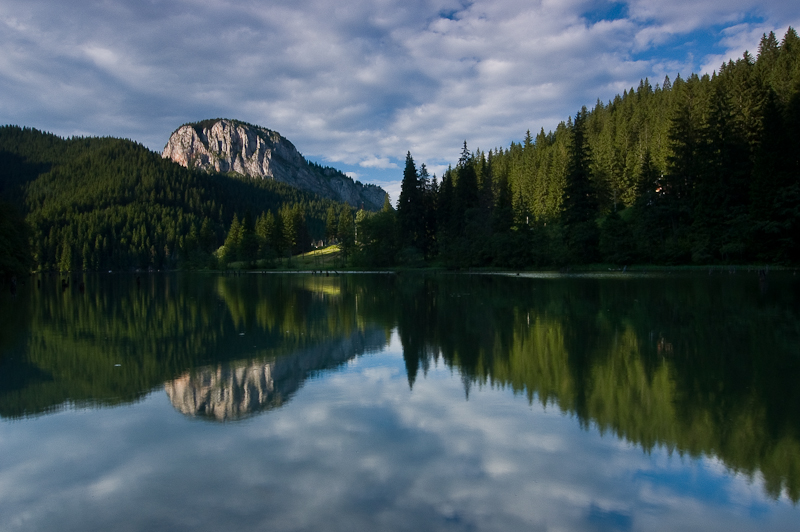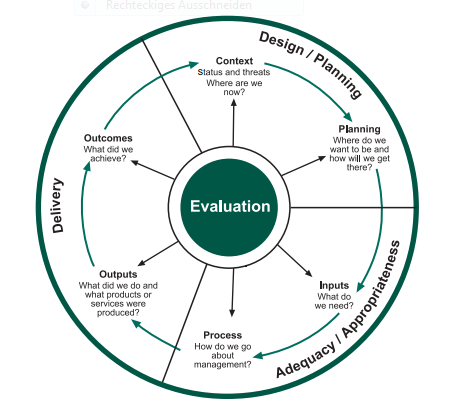
Defined by IUCN a protected area is “an area of land and/or sea especially dedicated to the protection and maintenance of biological diversity, and of natural and associated cultural resources, and managed through legal or other effective means”.
Carpathian protected areas are priceless jewels in the region representing forest, mountain, grassland and wetland habitats, which sustain highly functional ecosystems. They harbour a unique spectrum of plants and animals. They provide a broad range of services which benefit local people and society, making them corner stones to the preservation of the Carpathians and their outstanding biodiversity. Often they are core areas for rural sustainable development.
The Carpathian protected areas cover around 36.000 km2 which equals to approximately 18 % of the Carpathian ecoregion. There are two types of large-scale protected areas, national (Hungary, Romania, Slovakia, Serbia) or national nature parks (Ukraine) and protected landscape areas (Czech Republic, Hungary, Slovakia) or landscape parks (Poland, Serbia, Ukraine).
More than half of the protected areas, i.e. protected landscape areas or landscape parks, in the Carpathians belong to Category V according to the IUCN Protected Areas Category System, which means that “the interaction of people and nature over time has produced an area of distinct character with significant ecological, biological, cultural and scenic value: and where safeguarding the integrity of this interaction is vital to protecting and sustaining the area and its associated nature conservation and other values”. (ICUN 2011)
Still a big number of protected areas, i.e. national and national nature parks, belong to Category II according to the IUCN system, which represent large natural or near natural areas set aside to protect large-scale ecological processes, along with the complement of species and ecosystems characteristic of the area, which also provide a foundation for environmentally and culturally compatible spiritual, scientific, educational, recreational and visitor opportunities”. (IUCN, 2011)
While national parks are designated in all Carpathian countries, other types of protected areas differ slightly or more considerably. In the Czech Republic, Poland, Romania, Serbia and Slovakia nature reserves are designated. A similar category exists in Ukraine (nature zapovednik) and in Hungary (nature conservation areas). Forest reserves are also designated in Hungary and Romania. In addition, Romania protects certain areas as scientific reserves.
Non-EU Carpathian countries preserve biodiversity through national ecological networks, by implementing international agreements such as the Bern Convention that entails designation of sites as part of the Emerald Network, and by contributing to the Pan-European Ecological Network (PEEN) that promotes synergies between different networks like Natura 2000, Emerald and protected areas or the UNESCO’s programme on Man and Biosphere by designating biosphere reserves.
EU Member States have designated sites under the Birds and the Habitats Directive as part of the Natura
2000 network of the European Union. For EU countries this equals to protected areas of the Emerald Network. For more information on Natura 2000, please refer to the respective section on this website!
Since 2001, under the umbrella of the Carpathian Convention, protected areas comprising more than 100 ha and having an administration are members to the Carpathian Network of Protected Areas. Please refer to the geoportal to find their locations on the map!
What do protected areas stand for?
Functional ecosystems represented by protected areas in the region form the vital necessities for human well-being by providing:
- Resources like water, timber, non-timber forest products, hey, pasture grounds etc. on condition that they are used/managed in a responsible, sustainable way. Resource extraction is allowed in protected areas of types IV, V and VI according to the IUCN classification), but needs to follow sustainable principles.
- Water recharge, filtration, or purification.
- Clean air/pollution mitigation.
- Carbon sequestration and climate change mitigation.
Furthermore, protected areas represent the
- Basis of traditional cultures of local people (historical, spiritual).
- Scenic hub for leisure activities, recreation and tourism.
- Diverse terrain for scientific research and education.
- Model areas for sustainable regional development.
These benefits could be lost through shifting stakeholder interests, putting the management of protected areas and the surrounding regions at stake. Activities such as illegal logging, poaching, and uncontrolled infrastructure development leading to habitat fragmentation and pollution, and the progression of industrialized monoculture severely endanger functional protected areas. Additionally, scale and system of protected area management planning and implementation is a matter for improvement including financial resources. Although protected areas increase in number and area there are still several valuable areas in the Carpathians which are not yet part of a protected area network. Often designation of protected areas do not guarantee effective management, thus many of the existing protected areas need to be managed more effectively involving relevant stakeholder.
Management of protected areas
Management of protected areas is a comprehensive field of activity, from management planning and performance to monitoring and adapting management as required.
The IUCN Framework is based on the principle that good protected area management should follow a cyclical process with six stages or elements. The management cycle illustrated below identifies six important elements in this process that ideally should be addressed.

Source: Protected area management cycle (Hockings et al. 2006)
Management
- begins with understanding the context of the protected area, including its values, the threats that if faces and opportunities available, its stakeholders, and the management and political environment;
- progresses through planning: establishing vision, goals, objectives and strategies to conserve values and reduce threats;
- allocates inputs (resources) of staff, money and equipment to work towards the objectives;
- implements management actions according to accepted processes; and
- eventually produces outputs (goods and services, which should usually be outlined in management and work plans)
- that result in impacts or outcomes, hopefully achieving defined goals and objectives.
There are many guidelines/tools available for protected area management at the global level on various websites (IUCN , CBD, etc.)
However, various guidelines/tools have been developed in the past several years specifically tailored to the characteristics of protected areas in the Carpathians.
Please, find a selection of pdfs and links below:
Carpathian Countries Protected Areas Management Effectiveness Tracking Tool (CCPAMETT) & Guidelines how to use it in all Carpathian languages
The CCPAMETT is an online tool dedicated to protected area management teams to evaluate their performance. The tool should be done on an annual basis and guides a thorough discussion through and analysis of many aspects of work in a protected area. The tool is based on the Management Effectiveness Tracking Tool (METT) which was developed by the World Bank together with WWF in 2007. The tool is an output developed during the Protected Areas for a Living Planet Project carried out by WWF Danube-Carpathian Programme together with partners from the regional and local level and supported by the Swiss MAVA Foundation (2007-2011).
Versions: English, Czech, Hungarian, Polish, Romanian, Serbian, Slovakian, Ukrainian.
Guidelines for participatory management of protected areas
The guidelines are an output developed during the Protected Areas for a Living Planet Project carried out by WWF Danube-Carpathian Programme together with partners from the regional and local level and supported by the Swiss MAVA Foundation (2007-2011).
Versions: English, Czech, Hungarian, Polish, Romanian, Serbian, Slovakian, Ukrainian.
Guidelines on the assessment of goods and services for protected area managers
The tool is an output developed during the Protected Areas for a Living Planet Project carried out by -Carpathian Programme together with partners from the regional and local level and supported by the Swiss MAVA Foundation (2007-2011).
Versions: English, Czech, Hungarian, Polish, Romanian, Serbian, Slovakian, Ukrainian.
Study “Common Integrated Management Measures for Key Natural Assets in the Carpathians”
The study illustrates how integrated management can be performed not only by natural resource managers but also by protected area managers. The study is an output of the BioREGIO Carpathians Project (SEE ETC, 2011-2014).
Versions: English, Romanian
Study “Regional Development Opportunities of Protected Areas and Natural Assets in the Carpathians”
The study is a useful compilation of opportunities, challenges and examples of solutions using the potential of nature and its services for various sectors like tourism, forestry, agriculture, non-timber forest products, energy, and fisheries. The study is an output of the BioREGIO Carpathians Project (SEE ETC, 2011-2014).
Versions: English, Romanian
The report aims to generating evidence of how sustainably managed protected areas support productivity in key sectors such as tourism, forestry, and industry. Furthermore, the report seeks to demonstrate the costs associated with unsustainable development. It was developed during the GEF financed project “Improving the Financial Sustainability of the Carpathian System of Protected Areas ” (2011 – June 2014).
Links to protected area networks offering useful information for protected area managers
Carpathian Network of Protected Areas
Alpine Network of Protected Areas
EUROPARC Federation
Links to universities and organisations offering training on protected areas related topics
The Foundation supports the development and continuous improvement of the capacity of managing the Romanian protected areas, education and raising awareness on the importance of nature conservation.
Alpen-Adria University, Austria
The Alpen-Adria University, Klagenfurt, Austria offers an international 2-year postgraduate Master of Science Programme “Management of Protected Areas”. The programme is carried out by the University and is supported by the E.C.O.
